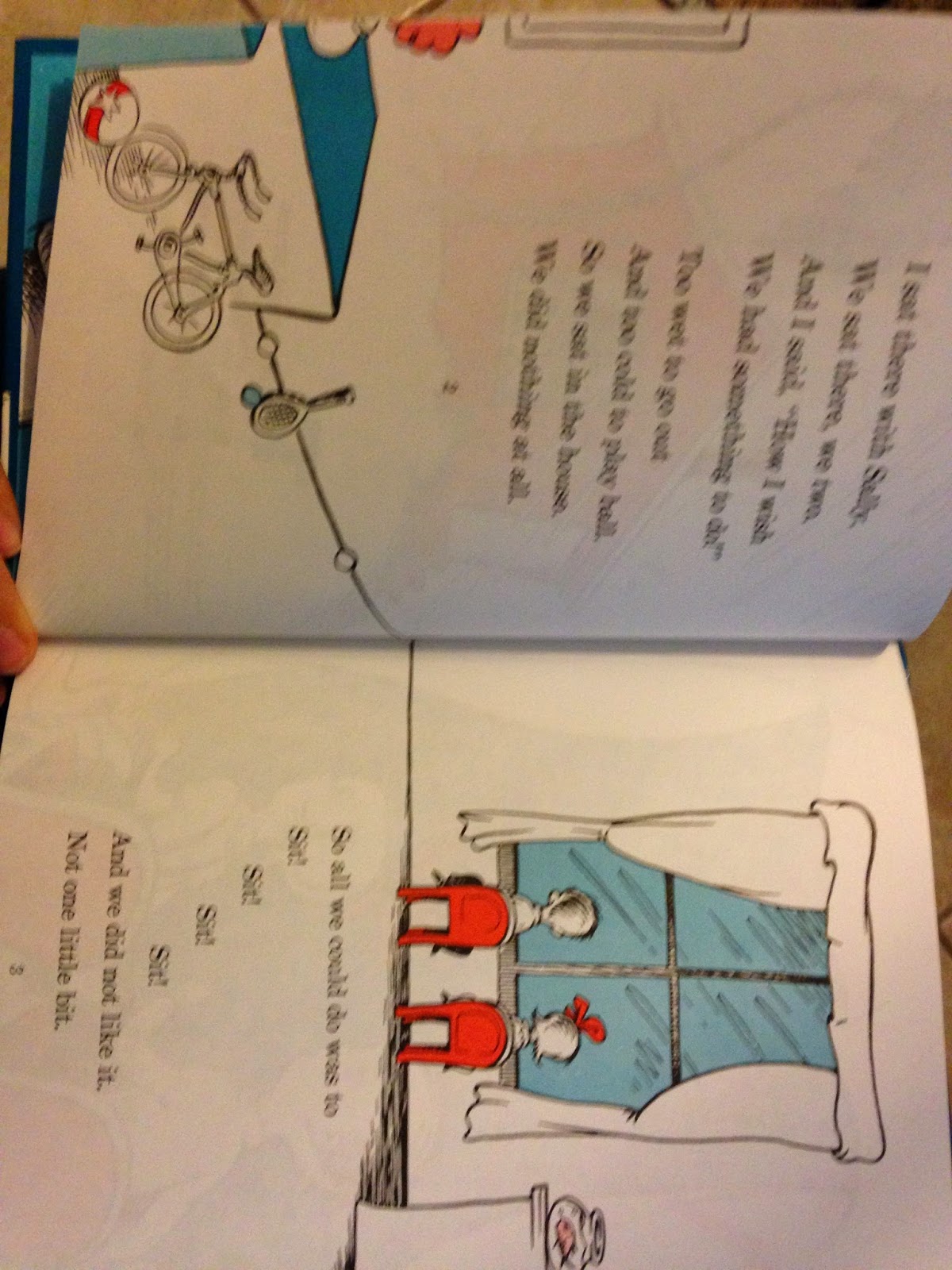The illustrations in The Cat in the Hat are simplistic drawings. I think that children will like them because they are something realistic to their own drawing capabilities. What I love most about them is that they tell the story along side the text. I think the illustration are a very important aspect and aid to the text in the story. One of my favorite images from the story was the one of the cat in the hat releasing thing one and thing two.


The intended interest level for The Cat in the Hat is for Kindergarten-second grade. However I believe that it can be applied to children of all ages as far as being used in literature. The genre of this book is fantasy, comedy, and classic.
One of the biggest literary devices found in the story The Cat in the Hat is personification. Personification is when human qualities are given to non-human things like animals or inanimate objects. I think this story would be an excellent teaching aid for introducing students to the ideal of what personification is. One of the first images and wording of personification that readers encounter comes from some of the very first pages of the story. The cat walking in the door wearing clothing and talking were all examples of personification.

Classroom Application:
Critical Thinking Preliminary and Post Reading Questions
- Before teachers begin reading The Cat in the Hat to students they should begin by showing students the cover of the book a long with a few images to get them thinking about what the story might be about.
Teachers should ask questions about the chosen images to get the students engaged and problem solving. Some question that could be asked include: What do you think this story is going to be about?, What do you think is going to happen to the cat?, The story is called The Cat in the Hat do you think the story will be all about him?, Why does the cat look so happy?, Why is the cat wearing a hat?, etc. - After reading The Cat in the Hat teachers should expand on the reading by asking questions that will get students thinking about the future and what happened in the story. For example: Do you think that the cat is good or bad?, What person view point was the story told in and give an example to defend your response?, etc.
Demonstrating Cause and Effect
- Why do you think that the cat made a mess?
- Do you know why thing one and two were such troublet?
- Why was the fish so worried?
- Why weren't the children having fun?
Character Analysis
- Describe the children?
- Describe the cat?
- Describe the fish?
Personal Connections
- Teachers should ask students what things from the story they can relate to their own lives. For example being bored, not wanting to disappoint a parent, making a mess, cleaning a mess, having a pet, etc.
Sequencing Skills
- Teachers can expand on student sequencing skills by asking students to draw several pictures about their favorite parts of the story and then having them put their pictures in order of how they occurred in the story.
Summarizing the Story
- The teacher can call on students to help summarizing what happened in the story they just read. The teacher should ask each student to add to the summary before summarizing herself/himself about what happened in the story.
Theme
- The teacher should ask students to write down what they think the purpose or theme of the story was. It could have been awareness of strangers, imagination, etc.
Interactive Fun
- I think it would be nice if it is possible for the teacher and a counter part to act out the story of The Cat in the Hat for the class. Or use a story book video of the book like in the video I found below.
- https://www.youtube.com/watch?v=HQW8AfBdea4





No comments:
Post a Comment